Table of Contents
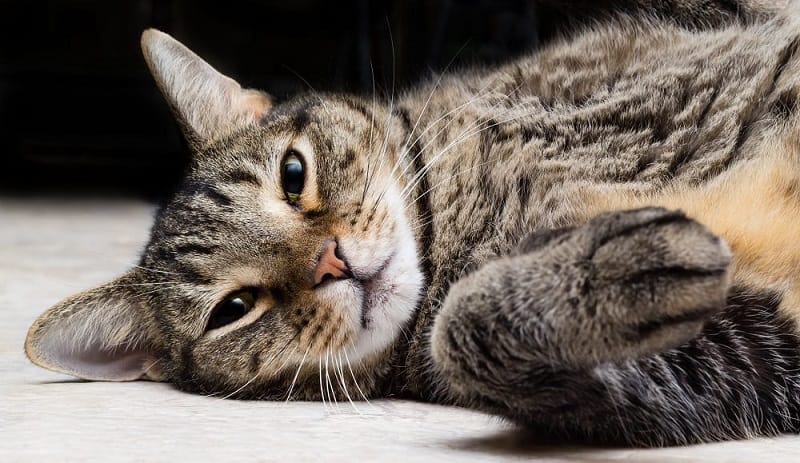
Whatever your interest in tabby cats might be, there is no denying that they are one of the most recognizable cat types in the world. Although that may the case, many people struggle to define what a tabby cat is, and as there are so many varieties, what one tabby cat may look like, may be very different from another. That’s why we have decided to make a complete guide to tabby cats to help you figure them out.
In this article, we are going to define exactly what qualifies a cat to be a ‘tabby’ and explain the differences between the various types of tabby cat that there are. We’ll also tell you why they make such wonderful pets, and some fun facts about them too
The Definition of a Tabby Cat
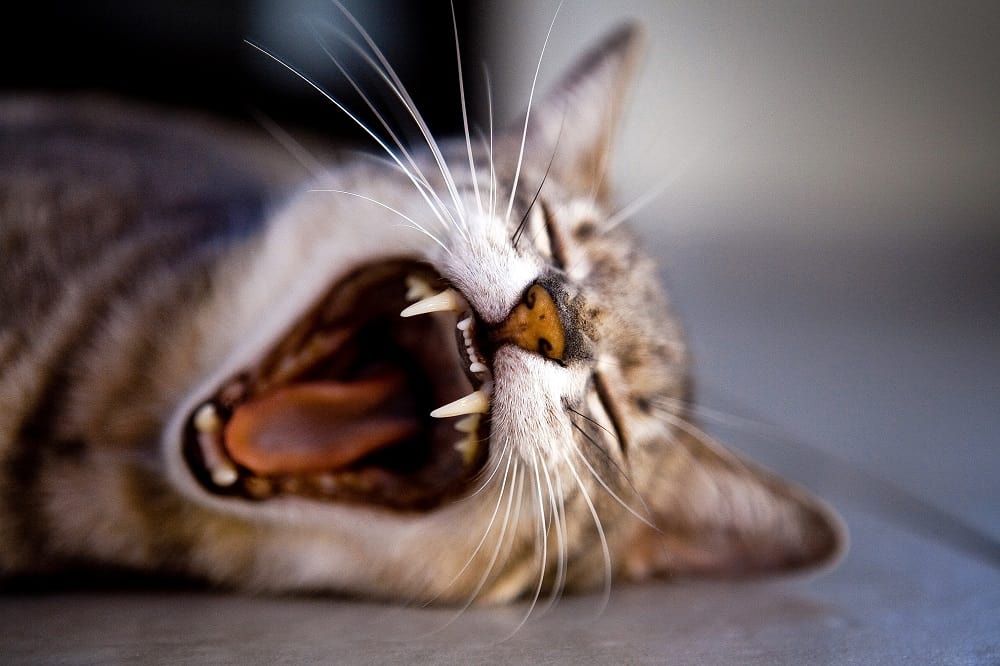
The first fact we are going to tell you may come as a surprise, but a tabby is not a breed of cat. Unlike, Siamese or Persian which are certified pedigrees, tabby isn’t recognized as a specific breed.
Instead, the term tabby is used to describe any domestic cat which has distinctive markings such as lines, dots, stripes and swirls, which identify it as a tabby cat. Other than these, the most recognizable feature of tabbies is the capital ‘M’ marking on its forehead.
So, rather than being the name of a cat breed, the term tabby is one which describes the physical description of cats. That being said, there are several breeds of cats, whose markings are generally those of a tabby so almost all cats within that breed could be called tabbies. There are also countless mixed breed cats and mongrel cats who are tabby cats because they have the appropriate markings.
Where the Name ‘Tabby’ Comes From
If you look up the definition of the word ‘tabby’ you will likely see two definitions. One is obviously the cats we are talking about in this article, and the other is a fabric or silk with a striped pattern. The question is ‘Which came first?’
Answer – it was the fabric, whose name in Arabic was ‘Atabi,’ and was made in a district of ancient Baghdad, called Attabiah. In the 17th century the word atabi, was altered to tabby by those who spoke English, but this was long before tabby cats had been recognized as a distinct type of cat.
The word tabby then began to be used to describe the striped markings on cats, but it wasn’t until the late 18th century that cats with these markings were called tabbies.
The ‘M’ on a Tabby Cat’s Forehead
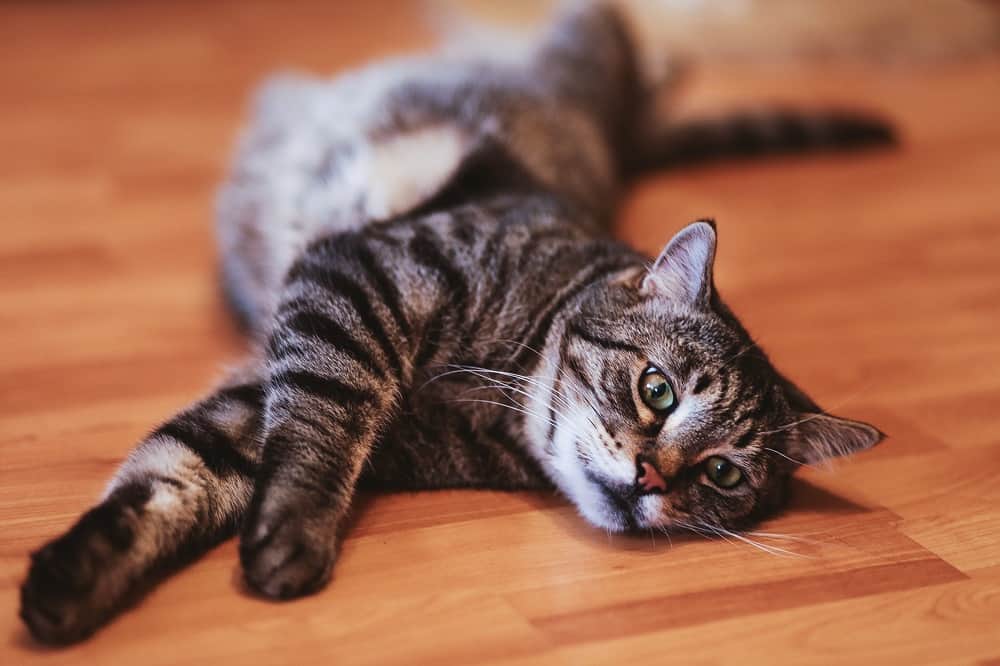
An individual cat does not have to have all the associated markings of tabbies, to be called a tabby cat, but it must at least have one of them, and that is an ‘M’ on its forehead. This more than any other type of marking is what defines a cat as being a tabby, and regardless of whether they also have other stripes, swirls, and patches, you should always be able to see an ‘M’ outline on the forehead of a true tabby cat.
Some of the mystique about tabby cats comes from the many theories and legends about what the ‘M’ stands for. One of the earliest comes from Ancient Egypt, where the word for cat was ‘Mau’, which if you think it about sounds very much like ‘Meow,’ the noise cats make.
Another story relates to Mary, who when Jesus was a baby asked animals to move closer to him to comfort him and keep him warm. The only one small enough to get into the manger was a small tabby cat whom Mary thanked by rendering the first letter of her name on its forehead.
The final legend is that a tabby cat called Muezza saved the life of Prophet Mohammad when a snake attacked him, and to show his gratitude, Mohammad bestowed the letter ‘M’ on its forehead.
Whichever of these you prefer or even if you have your theory why the ‘M’ is there, there can be little doubt, that this letter on their forehead adds to the personality and beauty that tabby cats have.
The Five Main Tabby Cat Types
Other than the ‘M’ on their forehead, there are several other markings that are common to tabby cats. Specific breeds will have very defined markings which are common to that breed and with which they are recognized as such.
The markings of other tabbies which are mongrels or crossbreeds can be a combination of some or all of them, depending on their genetics.
To help classify and identify tabby cats, their markings have been split into five types. These are mackerel, spotted, ticked, patched and classic, and while that might sound like the line-up for a bizarre new range of burgers, they are actually the names given to most common tabby cat markings.
Mackerel Tabby Cat
The answer to the question that may be in your head right now is, ‘Yes, it is named after mackerel fish.’ Having said that, there are some people who believe these markings are more akin to a tiger, and they’ll often call a tabby with mackerel markings a ‘Tiger Cat.’ We’ll stick with mackerel for the purposes of this article, as this is the more common name for these markings.
What you will see on a mackerel tabby are thin, stripes around their legs and their tail, with the ones on their legs often looking like they have bracelet around them. Sticking with the jewelry theme, their chest will have lines which give the appearance of them wearing a necklace.
The sides of their body will have stripes which can be either solid or broken, and in their stomach area, they normally have two rows of button-like marks.
Across the cat’s haunches and shoulder, there will be very faint lines which produce a pattern similar to that you would see if you were looking at the bones in a fish skeleton, which is obviously where the reference to mackerel comes from.
Spotted Tabby Cat
The name gives this one away somewhat, and as you have probably already worked out, these tabbies have spots. Their spots can be oval-shaped or circular, small or large, and they normally appear as dark blotches.
The spots can be in a random pattern along the sides of their body and along their back, but they can also appear in straight lines. With these, it is often noted that they look the lines of a mackerel tabby pattern whose straight lines have been interrupted.
Spotted tabbies can sometimes have the necklace markings in their chest area similar to a mackerel tabby, but these are not as pronounced, and tend to be quite faint.
Classic Tabby
Tabbies with this pattern has the most common tabby cat pattern, and this pattern is the one which most people think of when they are referring to a tabby cat.
The main features are prominent and bold swirls which appear on the side of the cat’s body, with some of them looking like large blotches. This may be why in some countries, such as the UK, cats with this pattern are called ‘Blotched Tabbies.’ They are also known as ‘Marbled Tabbies,’ due to the color contrasts and patterns being similar to marble surfaces.
Running along their back, and from their neck to their tail, a classic tabby will have three broad lines. They normally have rings around their neck which gives us our third tabby that seems to be wearing a necklace. Classic tabbies have button-like blotches on their belly, and their tail and legs will tend to have broad bands.
Ticked Tabby Cat
Don’t worry – this does not mean the cat has ticks. Instead, it refers to markings which these tabby cats have. Unlike the other tabbies we have spoken about, ticked tabbies do not have any large swirls, bold stripes or distinctive blotches. This often raises the question as to whether they can really be described as tabbies at all. But with the letter ‘M’ still visible on their forehead, they most definitely are.
Ticked tabbies are often called ‘Agouti’ due to the coloration in their hair. Agouti hair has alternate dark and light bands and this is what many ticked tabbies appear to have.
The most prominent breed of ticked tabby is the Abyssinian cat, who from a distance seems to have no distinguishable markings, so you would not expect it to be a tabby, but if you look at one closely, you will see that its fur has the colored bands which are indigenous to ticked tabbies.
Patched Tabby Cat
As the name suggests these tabbies have different colored patches across their fur. The most common colors for these patches are brown with which you might also see red or ginger colored patches. The other common color for patches is a blue-grey which is sometimes seen along with cream patches.
In terms of any distinctive markings, patched tabbies can have any of the markings we have already described. This means its fur may show traits of the classic, mackerel, ticked, or spotted tabby. If a patched tabby does have any of those distinctive markings, they are more commonly seen on their head and legs.
Patched tabbies are sometimes referred to as tortoiseshell tabbies, and this is where it can get complicated. A cat which is not a tabby with tortoiseshell fur is nicknamed a ‘tortie.’ However, when the cat in question is a tabby, that nickname changes to ‘torbie.’ In other words, the second ‘t’ in tortie becomes a ‘b’ in torbie.
Below are some amazing patterns of tabby cats:
Some of these patterns are commonly bred and seen but there are some that can be quite rare in most places.
Tabby Cat Colors
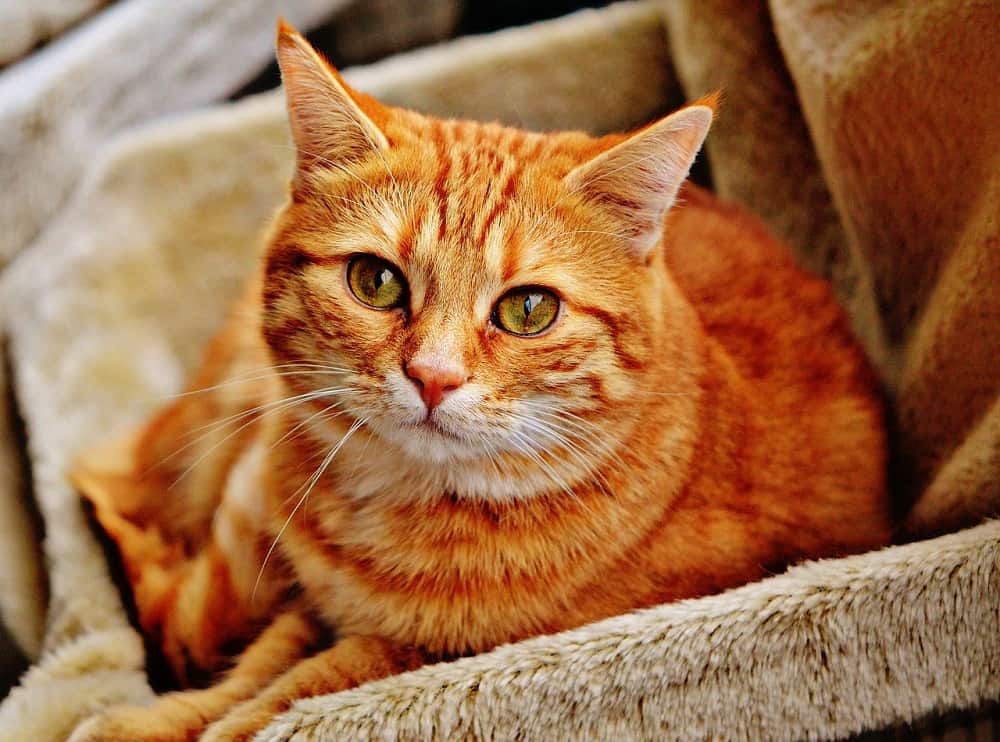
As well as the distinguishable markings that identify the different types of tabby cats, there are also variations in their colors. It is possible that these colors could appear on all five types of the tabby cats we have discussed so far. This is to be expected, given that any single tabby cat could be the result of two tabby cats mating, who were different types and had different colors.
As well as individual tabby cats having an array of colors, there are some colors which are sometimes used when describing the cat. These cats will still likely be classified within one of the five types, but because colors are often easier to identify than a marking pattern, they are used. Neither way is right or wrong if both the people discussing the cat understand the difference.
Black Tabby Cat
This is one of the most common colors that the markings on tabby cats have, albeit they are often within a combination of colors which will include browns. Where black markings become very distinctive is when the cat’s other fur colors are lighter such as silver or white. When the term ‘black tabby cat’ is used, it is normally in relation to a tabby cat who is predominantly black, where their markings might be a dark grey and only just distinguishable.
Grey Tabby Cat
Grey is very common across all tabby types, and there can be various shades of grey ranging from light to dark. A tabby which has virtually all grey fur will have a combination of dark and light grey stripes, spots, swirls or patches depending on which type of tabby they are. In certain lights, grey tabbies can have a beautiful blue or silvery hue to them, which looks stunning.
Brown Tabby Cat
This is the most common tabby color you will see, and it is brown markings that most people recognize as the quintessential tabby cat. Taking this a step further, a brown, classic tabby cat is generally what many people believe is the cat ‘breed’ called tabby, but as you now know, they are all wrong.
Ginger Tabby Cat
Ginger is the last of the four colors that we are likely to hear being used to define a tabby cat. Some might argue that ginger is actually a light brown, but many ginger tabbies, are closer to orange than brown.
They may not be as common, but a ginger tabby cat once held a Guinness World Record. Not for anything you might think a normal cat might do, but for the most syndicated comic strip. We are of course talking about, Garfield, who is surely the world’s most famous tabby cat, and a ginger tabby cat to be precise.
Common Tabby Cat Breeds
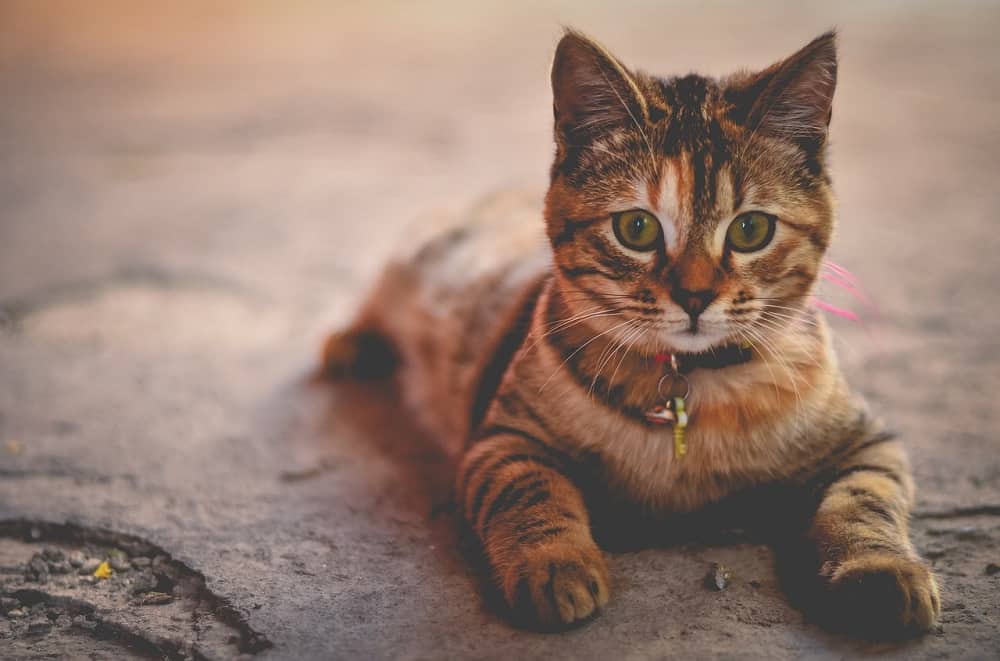
Although we have previously stated that tabby is not a breed of cat, there are several cat breeds which are tabbies. To give you an analogy, if we were talking about dogs, a terrier is not a specific breed of dog, but you have breeds which are all terriers such as Scottish, Bull and Boston.
There are around 30 cat breeds which can be classified as tabbies, and while we can’t go through every single one of them, here are four of the most popular.
Maine Coon
This is not only a very popular cat breed, it is at the top of the league when it comes to popular tabby breeds too. Maine Coons are one of the largest domestic cat breeds and it is because of its placid nature they are often referred to as the ‘gentle giants’ of the cat world.
Apart from their larger bodies, they look even bigger because of their long coats. These often have a glossy appearance, are can come in a variety of colors and markings. The most common of these are brown classic and mackerel.
American Shorthair
These are one of the most friendly and well-mannered domestic cats in existence. They mix very well with children and other pets, so if your family is split between getting a dog and a cat, the American Shorthair will allow you to have both. They are also very low-maintenance cats and easy to care for.
They are a medium to large tabby breed which can come in a variety of tabby patterns on their fur, and in several different colors as well. These include brown, silver, grey, and white.
Abyssinian
We mentioned these when we discussed ticked tabbies because they are the most common breed with ticked or ‘Agouti’ fur. They can come in several colors variations, with the most common being reddish brown, fawn, and blue.
Abyssinians are thought to be one of the oldest breeds of domesticated cats, and their loyalty and desire to be close to their human owner is a likely reason for this.
They are also extremely intelligent, playful and loving cats.
American Bobtail
American bobtails are friendly and active domestic cats, which are particularly known for being very intelligent. Their appearance doesn’t immediately lend itself to you thinking they look domesticated, but they are extremely playful which makes them great family pets.
Their name comes from the fact that their tails are short and normally less than half the normal length of a cat’s tail. They can come in any of the colors associated with tabbies, and the patterns on their fur tend to be classic and swirled.
Tabby Cat Traits and Behaviors
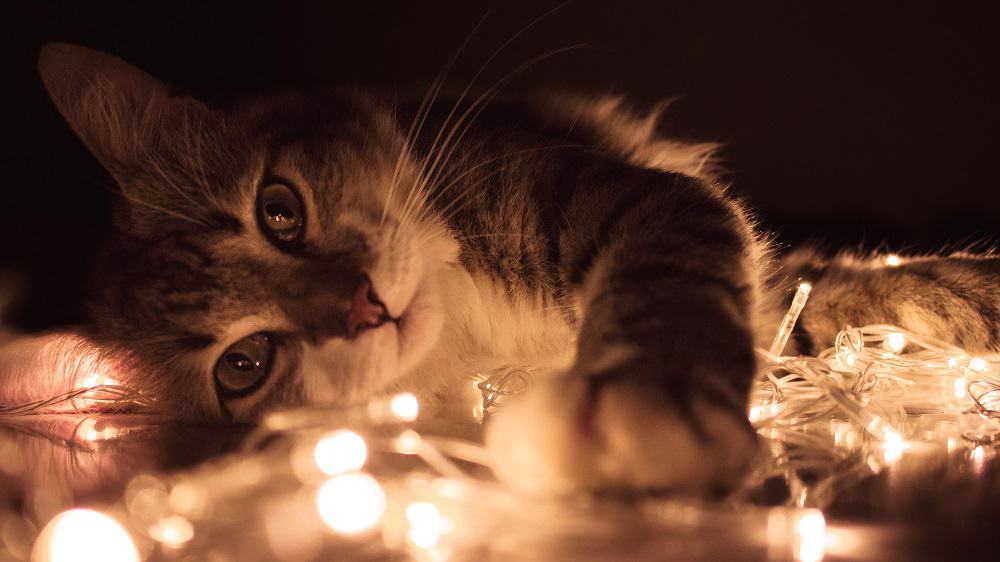
Due to the large array of breeds, and the fact that a cat can be regarded as a tabby purely because of its markings, to specify behaviors that apply to all tabby cats, is difficult, but not impossible. There’s enough feedback from those who’ve owned tabbies and evidence from experts who have studied tabby cats to give us a decent idea of their personalities, so here are some of the most generic ones.
Community
Cats often give the persona of being very individual, but tabby cats buck that trend by being seen to be very community spirited. They like being part of a group or family and will happily share food with other cats it regards as another member of that team. Tabby females will also care for kittens that are not their own and help to raise them.
Vocal
Tabby cats know what they like, and they are not afraid to let you know when something needs to be done for them. When they want back in the house you’ll hear them outside the door, and if their food or water bowls need filling they will tell you in much the same way children will pester you for candy or a drink.
Social
Tabby cats mix well with other pets, and children and are very happy to join in with any fun, walks, or games which the other members of the family are taking part in. This extends to the love and affection that they receive, as tabbies are well known for returning it in a big way.
Hunters
As cute and cuddly as most tabbies might seem to us, to mice and rats they may not be seen in the same way. This is because tabby cats are excellent hunters, and if you ever have a problem with rodents in your property, a tabby cat is a very effective solution.
They love chasing mice, but one problem which may arise is when they catch one, rather than kill it, they will tend to play with it and torture it. This may sound horrific, but it is simply the sporting element of a tabby’s nature coming through.
Entertaining
Tabby cats are great fun, and they love nothing more than cavorting around the room with their toys, and anything else that you give them to play with. There are probably more YouTube videos of tabby cats getting up to some hilarious high jinx than any other type of cat, so keep your video camera at the ready when it’s your tabby’s playtime.
Tabby Cat Fun Facts
Having just mentioned how entertaining they can be, to finish off our guide we thought we would give our top 5 fun facts about tabby cats. We hope you enjoy them.
Tabby Cat Fun Fact #1
The heaviest tabby cat ever was called Himmy. He lived in Australia in the 1980s and weighed over 46 lbs. Guinness, who compile world records, was so concerned that cat owners would overfeed their cats simply to try to break this record, they scrapped this category soon after Himmy passed away.
Tabby Cat Fun Fact #2
A tabby cat called Stubbs was elected mayor of the Alaskan town of Talkeetna. He has been re-elected several times, which the locals say is due to him having never raised local taxes.
Tabby Cat Fun Fact #3
Many famous celebrities through the years have been huge tabby cat fans including Winston Churchill, David Bowie, Hilary Swank, Meryl Streep and Taylor Swift. A candidate for the prize for the most obsessed is writer Mark Twain who loved them so much that he would rent tabby cats to take with him on vacation.
Tabby Cat Fun Fact #4
If you love cats you could soon be ditching Starbuck’s and Costa at coffee time, because across the USA there are over 90 ‘Cat Cafes’ in locations which include Dallas, Los Angeles, Miami, New York and Pittsburgh. In Atlanta, GA, there is a ‘Tabby Cat Café’ which has friendly cats on the premises and works to help local cat adoption charities.
Tabby Cat Fun Fact #5
If you were a male, orange tabby, your chances of finding another orange tabby to be your female companion or mate wouldn’t exactly be favorable. The numbers show that there is only 1 female orange tabby for every 4 males, so it is a pretty crowded field.
The video below is more of some quick and fun facts about tabby cats:
Summary
We hope you’ve enjoyed our complete guide to tabby cats, and that your knowledge and understanding of them has been enhanced. Tabby cats are fascinating given their history, and the vast array of types, colors and marking that they can have. There’s also the mystique surrounding the ‘M’ on their forehead which just adds to their enormous charm and appeal.